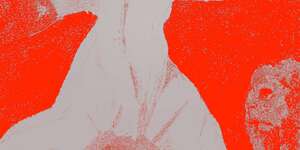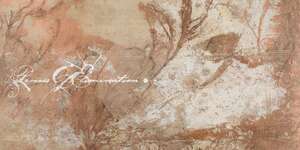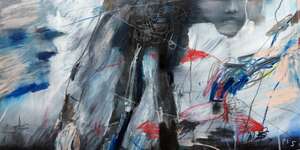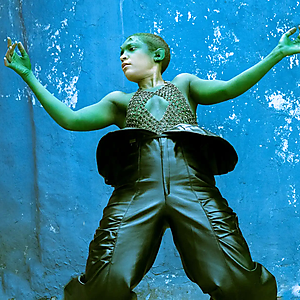|
More About Martha Skye Murphy
On the cover of her debut album, Martha Skye Murphy sits at a lie detector. In a grey and austere looking room, the chair next to her that should be operated by her interrogator is empty. It is an image, both striking and stark, that encapsulates exactly what’s so engrossing about this extraordinary debut LP – a record that thrives on the push-and-pull between fact and fiction, intimacy and coldness, revelation and secrecy, trust and deception, distance and closeness. Its title, ‘Um’, appears as if a subtitle on a foreign film, implying that it has been translated from another language, and yet that’s not a word at all – a noise without concrete meaning that exists only in the gaps of a sentence.
Or, do the ‘U’ and the ‘M’ stand for ‘You’ and ‘Me’, or ‘You and Martha’? There are a thousand meanings to be taken from ‘Um’’s cover alone, let alone the eleven shapeshifting songs contained therein – songs that clash moments of baroque beauty and others of cataclysmic electronic noise, and employ textures that are by turns organic and artificial, hi-fi and lo-fi. Collaborations with the likes of pioneering sound artist Claire Rousay and Roy Montgomery are finely intertwined with the fruits of rigorous studio sessions with producer Ethan P. Flynn, and then again with intimate voice memos of Murphy improvising alone at her piano. Lyrically she conjures images inspired by everything from Ancient Roman hand-binding torture to a Fred and Ginger tap routine. “I wanted the album to feel like this constant tension between being in a very intimate domestic space, and then propelled into a far stranger environment that is difficult to situate,” she says. “I want people to feel disoriented, erotically charged by the intimacy of a bedroom, then catapulted into a desert.”
This is the kind of music that requires intense attention. “I need a listener who’s willing to submit,” she says. Rather than merely demand close listening, however, Murphy invites it; she was at pains to sequence the tracks on ‘Um’ in such a manner as to “coerce someone into the state where they’re going to hear it in a sensitive, vulnerable place.” She views the first side of the record as a gradual gesture outwards, “a campaign of desire and urgency,” as she puts it following tender opener ‘First Day’, and the second as a journey back into the self and the subconscious.
She has thought long and hard, too, about how much she wants to reveal to her listener and how much should remain hidden so that she can best maintain the record’s tension (the contrast between the coldness of the album’s cover and the intimacy of many of the songs is intentional). She is aware of being too didactic, and yet maintains ultimate control over this world she has created. The album starts and finishes with the click of a tape recorder and instructions – “Commence,” and “That’s enough” – that she whispers to her listener, quiet but also authoritative.
There are, however, central ideas that emerge from ‘Um’’s contrasting currents. “There are recurring themes of interest to me which are loss, longing, and memory,” she says. These are states, Murphy stresses, that distort one’s sense of time and place, and so she plays with the power of fluctuating landscapes: opener ‘First Day’ consists of individual notes recorded on different instruments from Texas to New Zealand to London, coalescing into one hovering chord around a field recording Murphy took while wandering New York. “I piece together lyrics and piece together meaning. I like to allow time for things to resurface after I first write them down.”
It's telling, incidentally, that When Marta Salogni, the acclaimed musician and producer who mixed the album, first heard ‘Um’, she commented that it was like experiencing a memory that hadn’t yet happened. She introduced Murphy to the term ‘Hiraeth’, an untranslatable Welsh term that refers to a blend of homesickness, nostalgia and longing for one’s home. “It summarised the whole record,” Murphy says.
Inspired as much by literature and cinema as she is music, Murphy developed a fascination with other art forms that might undermine the idea of linear narrative. “I wanted to reference footnotes and endnotes, where there’s a distortion of reading and you’re interrupted in the process,” she says. Take ‘Pick Yourself Up’ and ‘Dust Yourself Off’ for example. The title of the latter appears in the lyrics of the former, but by the time it’s actually heard on the record six songs later Murphy’s vocals have been reduced only to a wordless hum. “They’re within the same universe, but on different planets,” as she puts it. As well as the subtitle on the album’s front cover, it’s worth noting that the tracklisting on the back is designed to recall the contents page of a novel. “I became transfixed with books and films where time is distorted by annotations, or a letter appears that’s a precursor to a story from the past.”
As a vocalist Murphy has a rare talent for transformation, from her intimate, cracked whispers over the hypnotic drift of ‘Theme Parks’, to her piercing disembodied wails as ‘Kind’ implodes into a cataclysm of electronic noise. Elsewhere, she offers us little more than a distracted hum. In the studio, she and producer Ethan P. Flynn focussed on maximising those vocal capabilities by teasing out different personas. “One of the biggest sonic influences on the album was Russian sacred choral music,” Murphy explains, “so we would put mics in odd places, each vocal part positioned in varying areas of the room to try and channel a choir in a church or a sacred space, and when I was performing, I would have a slightly different inflection for each voice.” On the crystalline ‘Pick Yourself Up’, part of which she wanted to sound like a lullaby, she cradled objects as she sang in order to draw out the maternal. Later, on the very same song, she channels the eeriness of 19th century operatic divas, whom she heard on obscure out-of-copyright compilations growing up.
It would be an oversimplification to say that Murphy inhabits different characters on the record. Rather, she extracts different characters from the depths of her own psyche who gesture towards the fact that ‘the self’ is ultimately a vague and impermanent thing. She can be both exorcist and orator. “It comes back to that duplicity that exists within us all, the voices within that we have. My music is externalising the voices, and that’s why it’s so cathartic. If you don’t allow them to escape, they become demonic.” Similar figures emerge in the striking visuals that accompany lead single ‘Need’. One of the character’s in ‘Need’’s music video is a debonair, duplicitous spy who recalls the album’s fascination with the tension between truth and fiction. Another is a feral figure that gestures towards Isabelle Adjani’s role in the psychological horror film Possession, an exorcism of what Murphy calls “the most feral parts of my being.” For another of the video’s characters, Murphy set a brief that described them simply as ‘a mole’. “Obviously, a mole can be several things. A mole can be a liar or a trick, or a mole can simply be an animal that can’t see.” A song that slowly crescendos from a delicate breeze to a tempest of noise, as ever the drama on ‘Need’ ultimately came from within. “It’s a love song,” Murphy says plainly. The image of the mole is in part “a nod to being blind in love. But then there’s also a three-part structure to the chorus: ‘I need you to need me to need you’. There’s three selves in that refrain, so I wanted to create something visually that gestured towards multiple characters held by the same person.”
‘Um’ builds on what has come before in Murphy’s nascent, yet already storied career. “It’s taking a lot of the tenets of what I’ve been interested in before to another level,” she says. “Having the scope of an album has meant I can push it all further, the wanting to take the listener on a journey, push endurance levels, and toy with the tensions between fictional and factual spaces.” It was on 2021’s acclaimed triptych of singles, ‘Stuck’, ‘Found Out’ and ‘Concrete’ for instance, that she explored the idea that what a piece of art leaves out is more evocative than what’s present. On 2018’s Heroides, her debut EP based on Ovid’s poems about aggrieved ancient Greek heroines, she first demonstrated her ability to inhabit a series of other personalities through her voice.
It's worth noting, too, that that recorded output is just one part of Murphy’s artistic background. She has also written an electronic opera, which debuted at The Southbank Centre’s Purcell Room, delivered an ambient score and interactive website for Ivan Krzeszowiec’s film ‘The Late Departure’, forms part of the improvisational enigmatic collective Ex Mothers Union and writes reviews for the feminist art historical publication, Woman’s Art Journal.
As a child Murphy contributed the vocals to the opening credits of 2005’s ‘The Proposition’, for Nick Cave and Warren Ellis’ score. She would work with Cave again almost a decade later, as a featured vocalist on The Bad Seeds’ ‘Push The Sky Away’. Murphy has long since evolved into her own, entirely unique artist, but a spirit of collaboration has never left her. Her caterwauling guest vocals were a lightning bolt to Squid’s ‘Bright Green Field’, while on her own track ‘Concrete’ in 2021, she employed experimental duo LEYA to mesmeric effect. Always keen on exploring new directions, “working with other people helps me to constantly shift the genres I’m perceived to be associated with,” she says. On ‘UM’ she deploys field recordings from Claire Rousay and Roy Montgomery (who also provide percussion and guitar respectively), vocals from Dan English, flute from Gentle Stranger and caroline’s Alex McKenzie (she returned the favour with an appearance on Gentle Stranger’s ‘Inner Winter’ LP last year), trumpet from Squid’s Laurie Nankivell and the 10 year old Iara Soraya, to capture hints of Murphy’s own voice as a child.
Collaborative as it is, however, ‘Um’ is ultimately a work that only Martha Skye Murphy could have made. An obsessive when it comes to the finest details of sound, vision, and even physical packaging, and an artist whose work is littered with references and connections that defy one’s everyday notion of space and time, this is the work not just of a musician, but of a true auteur.
|

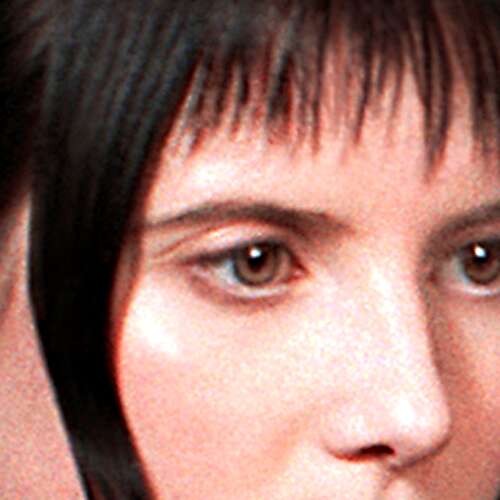 Single
Single
 LP
LP
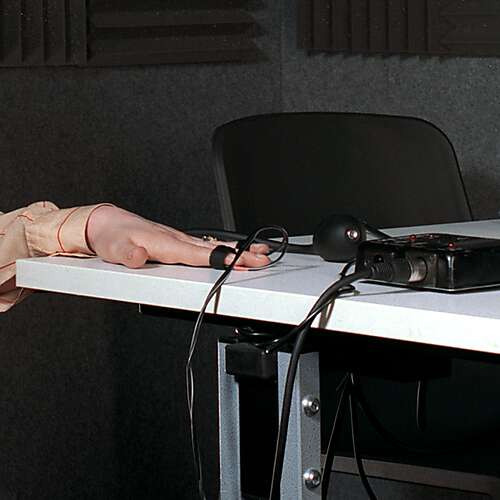 Single
Single
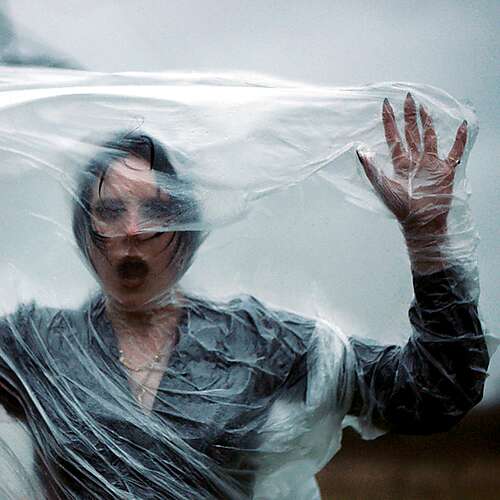 Single
Single
 Single
Single
 Single
Single
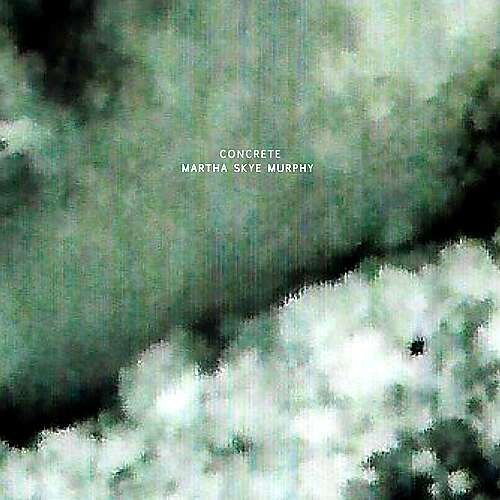 Single
Single






